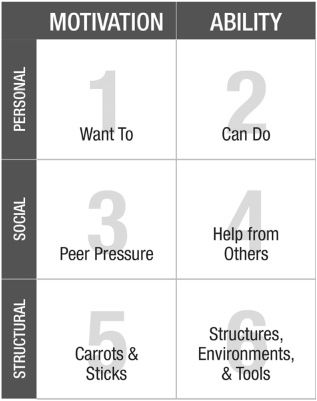Crucial Accountability: Conflict Management Series 2 of 4

This review of Crucial Accountability is the second of four extended reviews covering the Vital Smarts books, which also include Crucial Conversations, Influencer, and Change Anything.
This focus of book is to give the reader a set of strategies to make difficult conversations more effective. Note, “more effective” is quite different from “easier”. The person who tries to implement these strategies will have to be self-aware and able to exercise self-control to avoid the natural pull toward fight or flight because each of the strategies requires you to think clearly enough to notice the other person’s emotions, manage your own, keep the conversation focused on the core issue, and include follow up. Essentially, the authors are asking for what feels like an impossibility, depending on how far up the conflict mountain you’ve climbed (impossible seems to live somewhere between stages 3 and 4.)
Contact me for a full explanation of “the conflict mountain.”
Because it’s hard to work through thick walls of frustration, these strategies work best in the early stages of the problem; thus, this book should be required reading for early career supervisors and human resources professionals AND seasoned leaders who secretly dread performance management. And it doesn’t hurt to keep it in your library for revisiting.
The book can be broken down into the following components:
 1) Look within first. Ask yourself, “What am I contributing to the problem?”
1) Look within first. Ask yourself, “What am I contributing to the problem?”
Check yourself and your attitude
What stories are you telling yourself?
Focus on the CPR (content, pattern, relationship): triggering incident, recurring pattern, impact on relationship
2) Think about and investigation whether the problem is one of ability or motivation. Be sure to humanize the person. Empathy and respect are important. Intrinsic motivation is governed by the left column whereas the right column focuses on factors that the individual may not be able to completely control. But before you go on, click here to take a free assessment to help you gauge you are more likely to attribute disappointing behavior to motivation or ability.
3) When engaging the other person, be clear about the behavior and issues you want to focus on: bringing up every single thing might dilute your point. Don’t lose sight of your key point if the other person brings up other factors or gets upset. You have to balance monitoring the other person’s sense of emotional safety and responding to that. If the other person feels unsafe, fight or flight kicks in and the conversation becomes less productive. Likewise, if you get sidetracked, the problem may reoccur. Try to establish safety by “explaining the gap”. When you explain the gap, you recap the situation or pattern, explain how you are interpreting the situation, and ask the person whether you are right in order to give them an opportunity to share their perspective.
4) Rather than relying on power, perks, or charisma, motivate the other person by focusing on mutual goals, naturally occurring consequences, the short and long term impact of their behavior. Include follow up as part of your conversation. If their behavior is causing you to do extra work, don’t be silent about it.
5) If discipline is a real possibility that you can and will actually implement, say so. Whatever yo dou, don’t be a toothless lion. Levy consequences when necessary, but accept that this means that you must be consistent.





